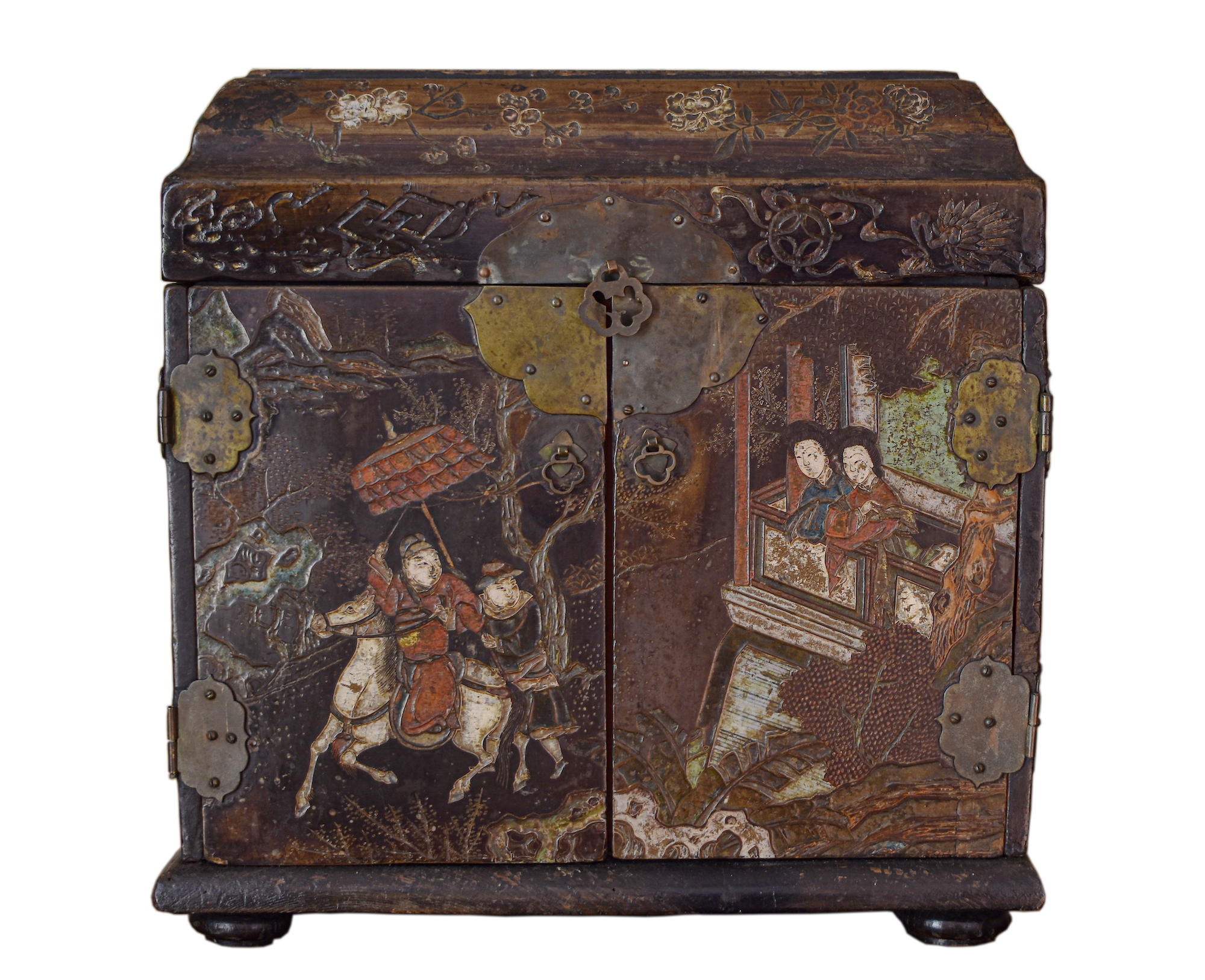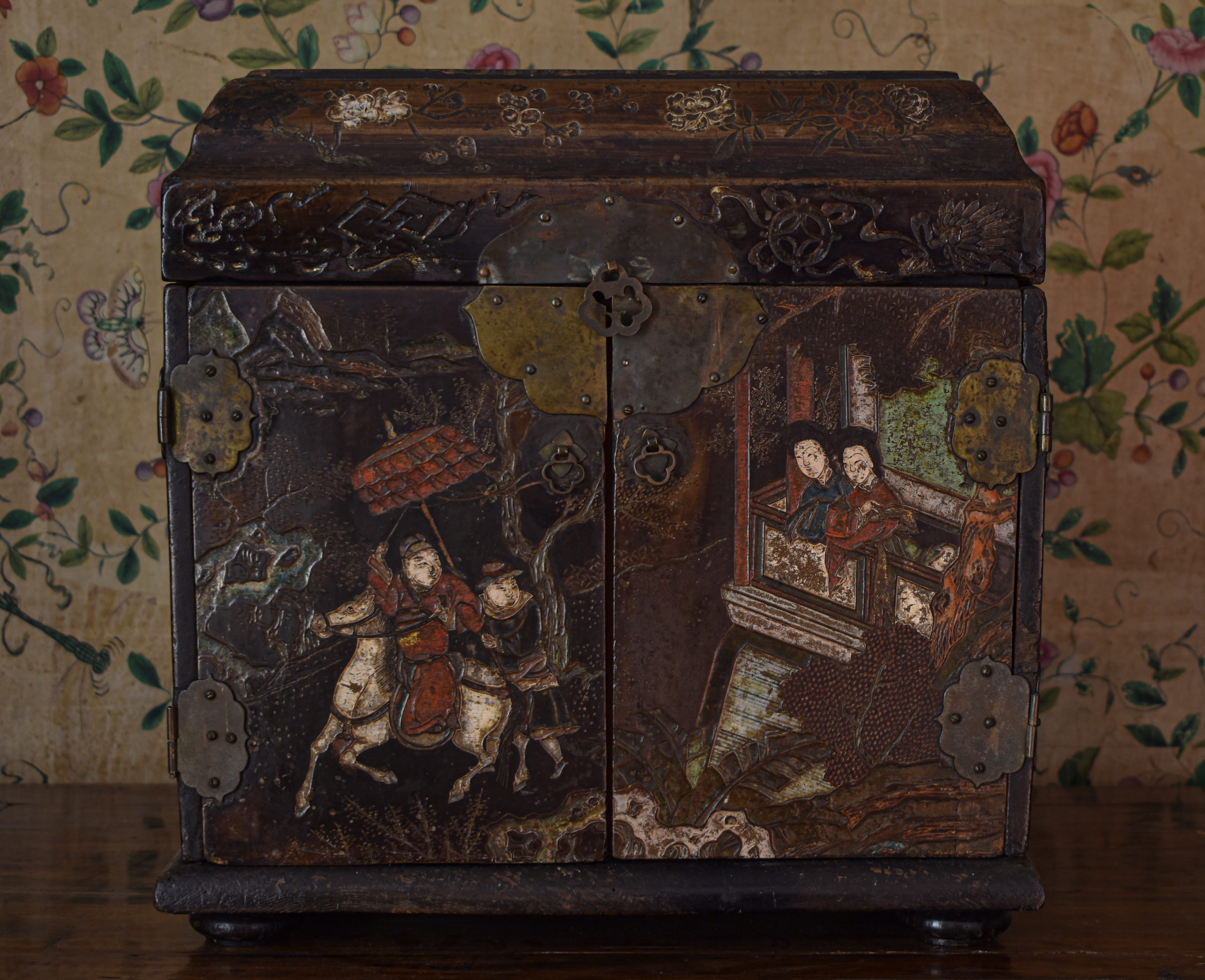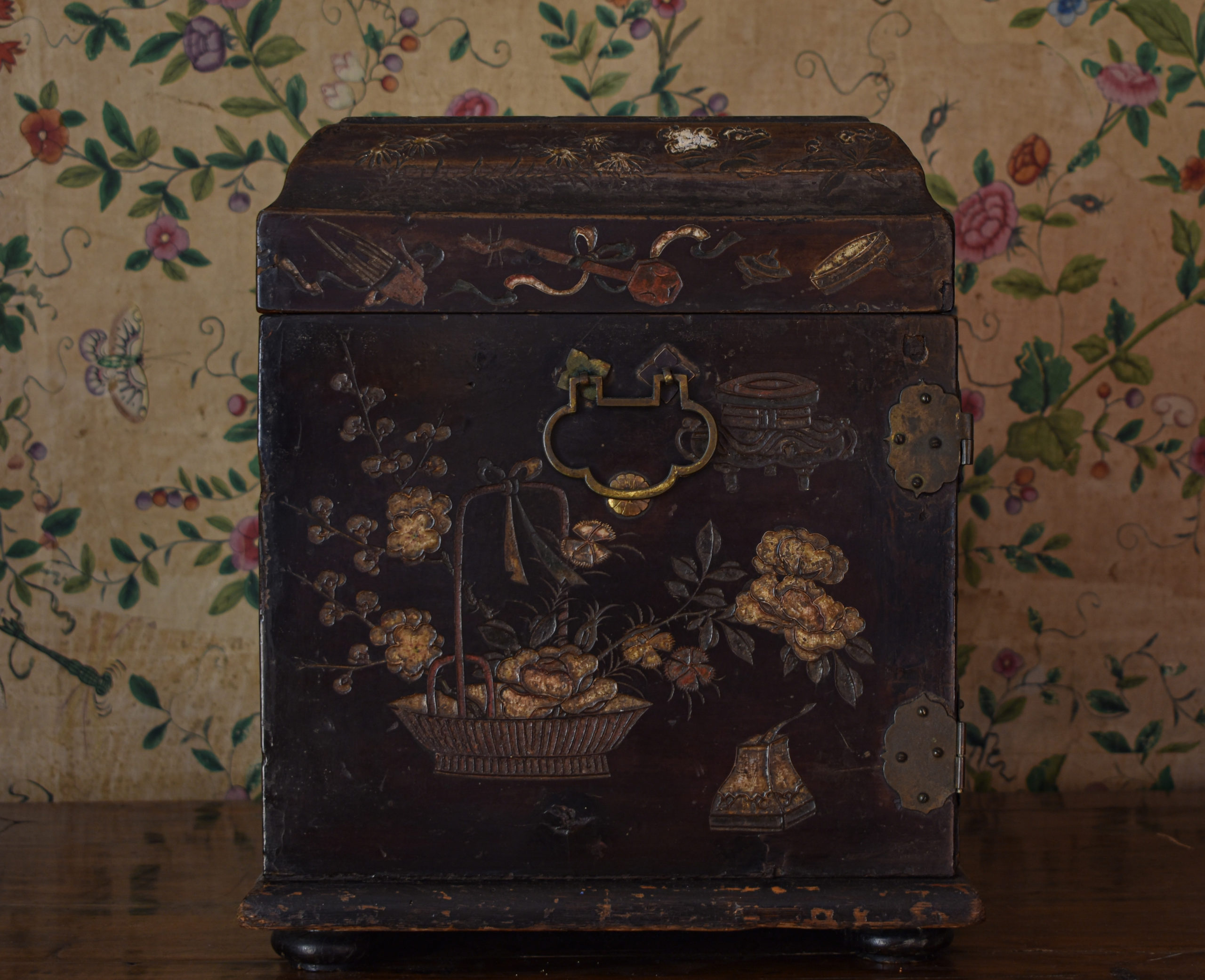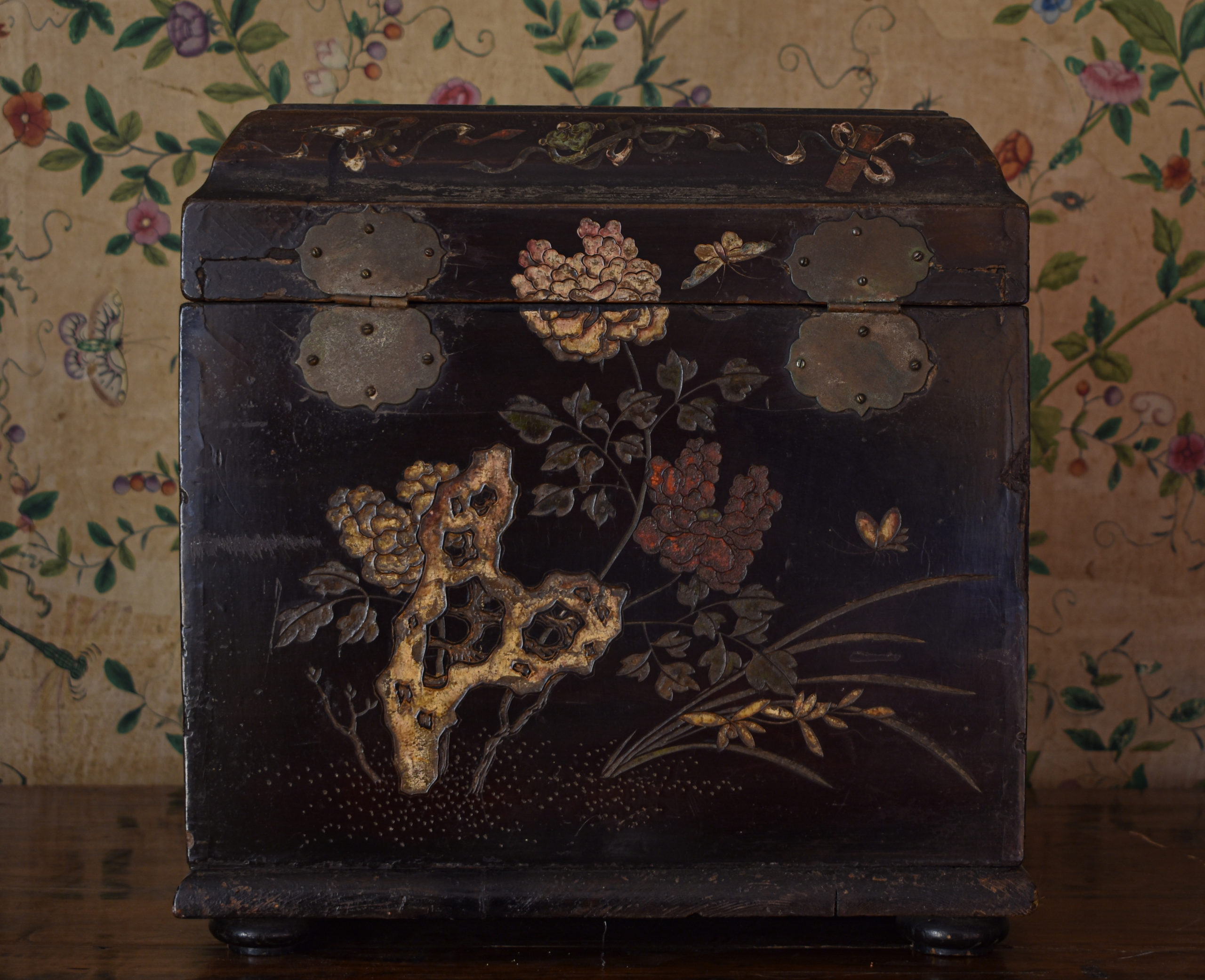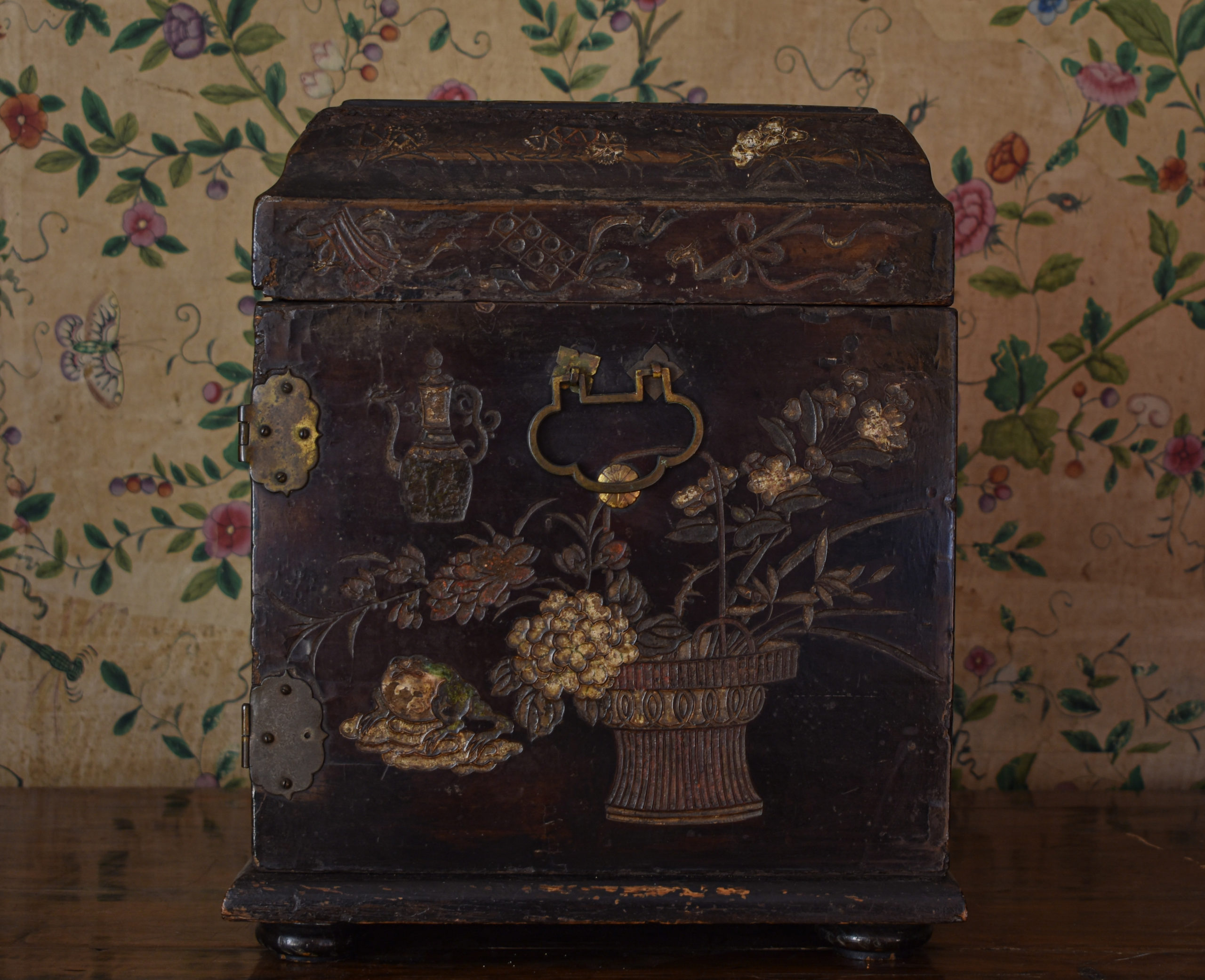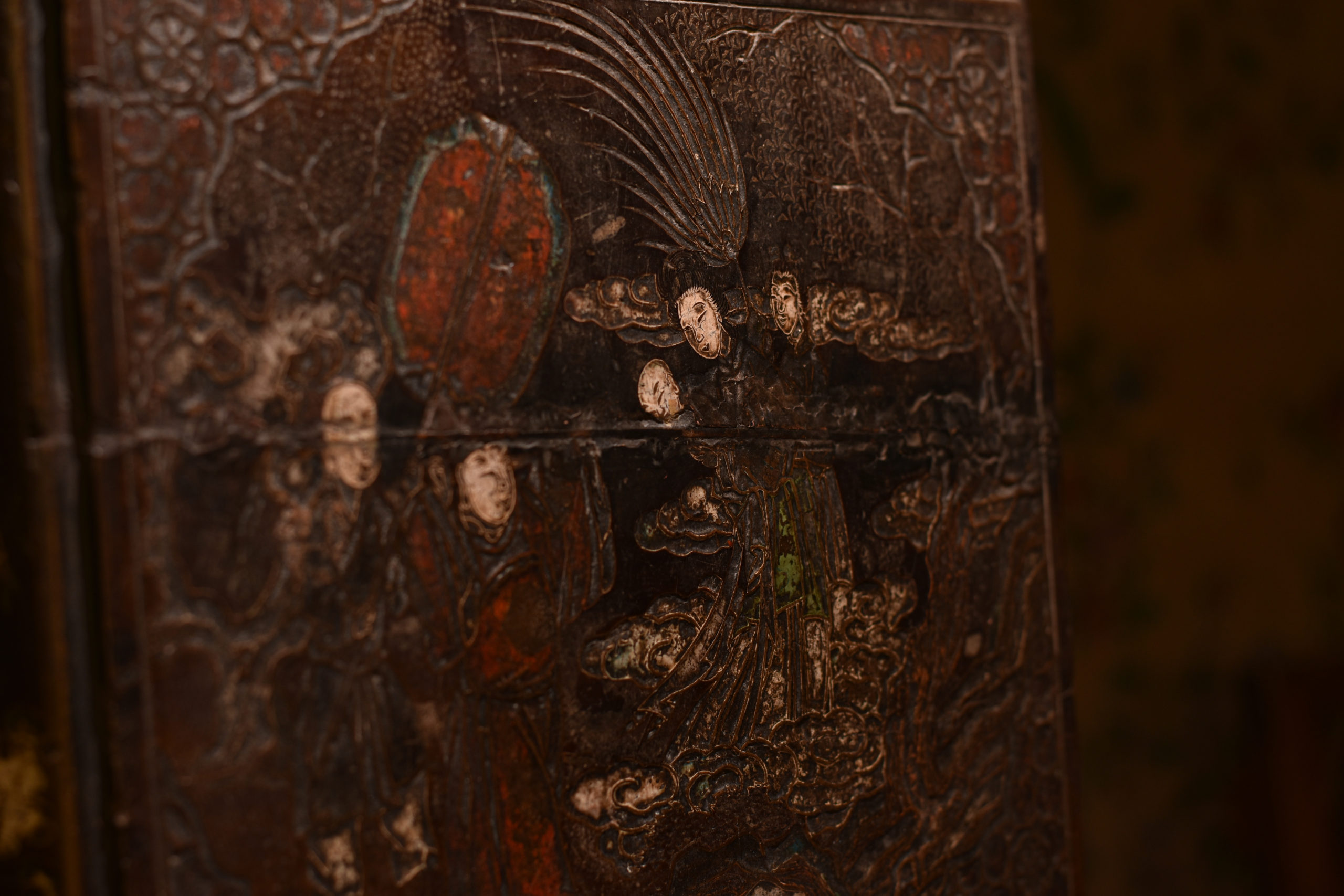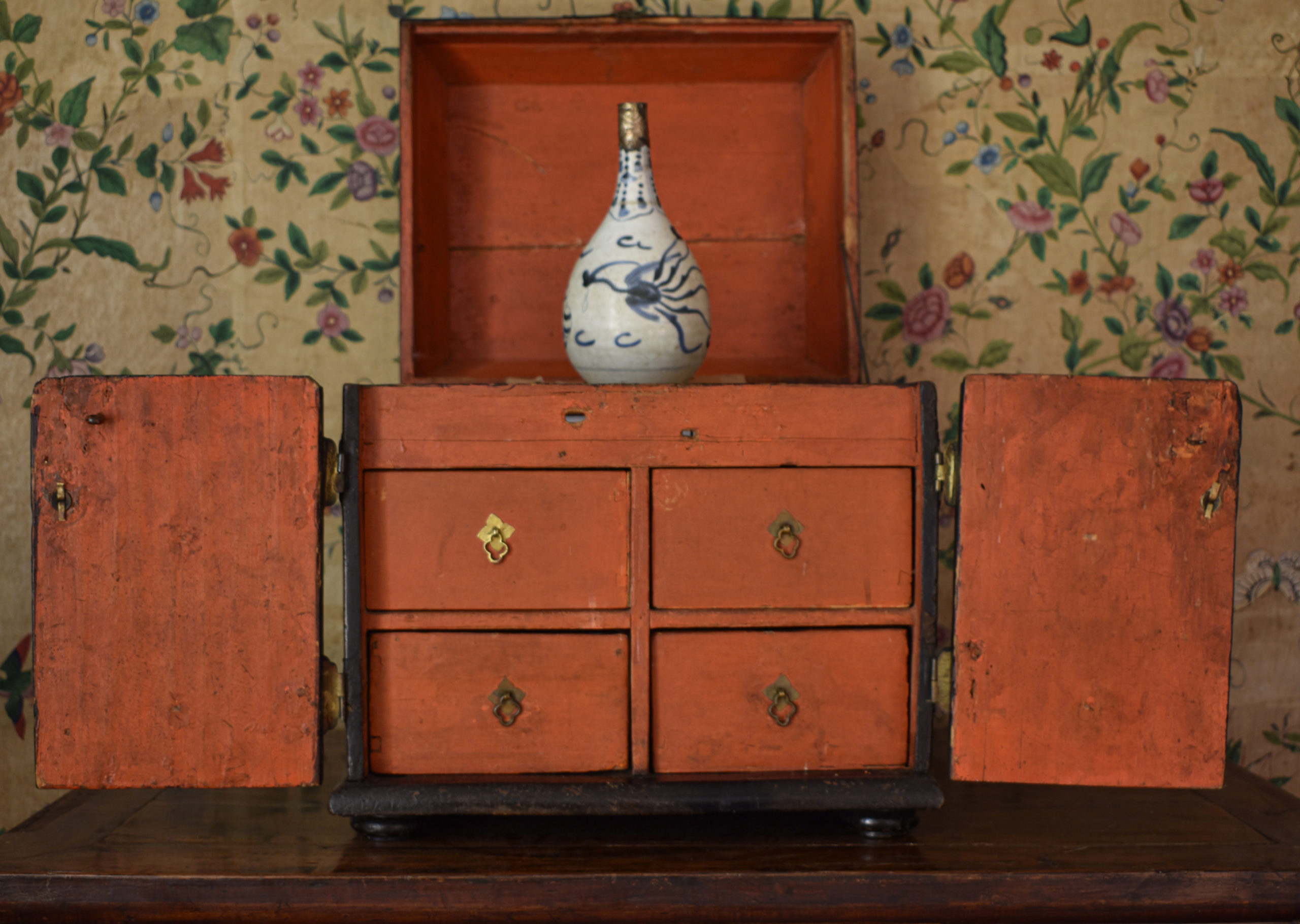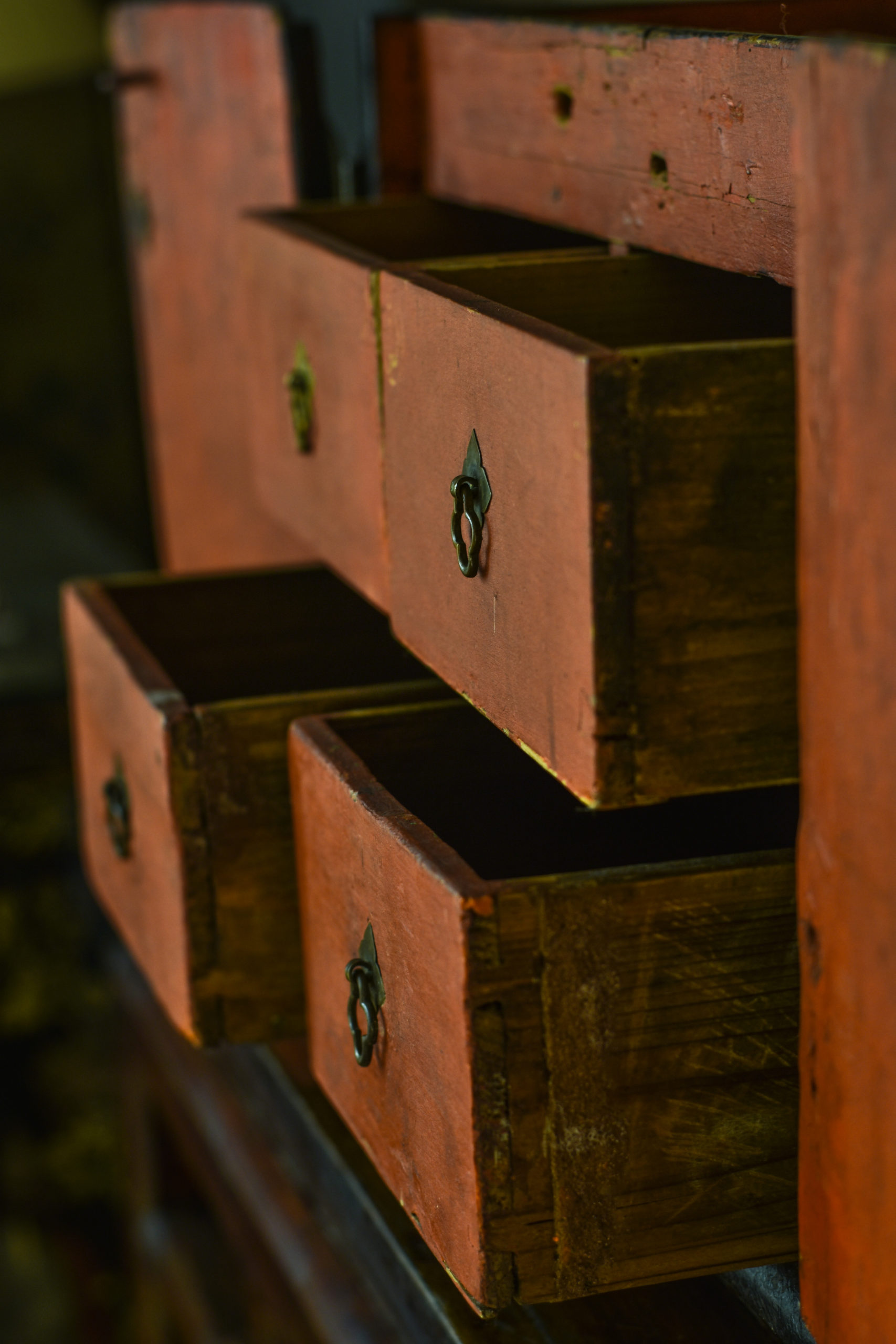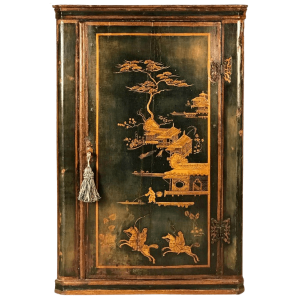Description
A rare Chinese polychrome Coromandel or ‘Bantam Ware’ lacquer casket or table cabinet, Kangxi period (1661-1722). Circa 1700.
This fine small Chinese-export lacquer fitted casket is decorated overall with polychrome incised decoration. Opening with two doors revealing a red interior with fitted drawers and a hinged rising top. In superb, almost entirely original condition, retaining its vivid colours and fine details with courtiers in a pavilion and on horseback amidst foliage and formal palace gardens. The small bun-type feet are historical replacements. Interestingly bearing an antique-script inventory #25 and A I on the base.
Nb. Bantamwork or Coromandel lacquer, not to be confused with ‘japanning’, is the term applied to decoration that is cut into a layer of gesso and then lacquered in colours. Much of the lacquer was transhipped from China through Coromandel in India, or the Dutch colony Batavia, Java.
References:
Coromandel lacquer or ‘Bantamwork’, with its characteristic incised decoration, was made in Henan province in Northern China from the latter-part of the Ming dynasty and exported to Europe from the end of the 17th Century through the East India Company’s and VOC trading posts on the Coromandel Coast of India. The technique consisted in overlaying a base of wood with a series of increasingly fine white clays and fibrous grasses. Over this surface, lacquer was applied and polished before the design was incised and the hollowed out portions filled with colour and gilt and finished with a clear lacquer to protect it.
Although John Stalker and George Parker used the term ‘Bantamwork’, the contemporary layman usually called it ‘cutt-work’, ‘cutt Japan’ or ‘hollow burnt Japan’. Stalker and Parker discuss two types of ‘Bantam-work’ – flat and incised – in their Treatise on Japanning and Varnishing (1688), noting that it ‘was done in colors mix’t with a gum water’. They also considered that it was ‘almost obsolete, and out of fashion, out of use and neglected….’ although admitted that ‘it was very pretty, and some are more fond of it, and prefer it to the other…’.
This casket/ table cabinet now on offer is related to one formerly with Malletts and illustrated in A. Bowett, English Furniture 1660-1714: From Charles II to Queen Anne (2002) p. 150, plates 5:9.
A much larger yet closely-related Bantam work coffer with rising lid was offered in the ‘Asian Art in Cologne’ sale lot 114 on 11th December 2021. Estimated @ £ 60,000 – £79,000.
Mme de Pompadour, mistress to King Louis XV from 1745 to 1751, was an avid collector and admirer of Chinese Coromandel or Bantam Work, and was probably largely responsible for the very high prices recorded for such pieces, sometimes 10 times or more the price of ordinary furniture of equivalent quality.
A Coromandel cabinet on stand was sold at Christies London, from the Simon Sainsbury collection, on 18th June 2008 @ £ 30,000. Catalogued as William III, ca 1690.
Literature:
John Stalker and George Parker, Treatise of Japanning and Varnishing (1688).
Further reading:
Coromandel lacquer – Wikipedia – https://en.wikipedia.org/wiki/Coromandel_lacquer
A Technical Study on Chinese Lacquer Technology. https://www.ucl.ac.uk/archaeology/events/2018/dec/technical-study-chinese-lacquer-technology-case-study-coromandel-lacquer
Bantamwork – Wikipedia – https://en.wikipedia.org/wiki/Bantamwork
https://www.britannica.com/topic/Treatise-of-Japanning-and-Varnishing
Coromandel – Coco Chanel’s obsession | Lampoon Magazine -https://www.lampoonmagazine.com/article/2021/02/24/coromandel-coco
The influence of East Asian lacquer on European furniture …



